Forum Replies Created
-
AuthorPosts
-
LiveSmart Team
KeymasterOverview
LiveSmart Google Chrome Assistant is a Chrome extension that is helping your agents to contact their visitors and is removing the necessity of being logged in the Dashboard panel.
Installation
There are two ways of installing the Assistant for your agents. Before going to any of the installation procedures, open the manifest file extensions/assistant/chrome/manifest.json and change https://YOUR_DOMAIN https://YOUR_DOMAIN:9001/ with your LiveSmart site location and LiveSmart server endpoint. The endpoint can be seen in config/config.json file in your main folder. For example if your LiveSmart is located here https://mydomain.com/video and your endpoint is https://mydomain.com:9001, your need to change the manifest like this
"content_security_policy": "script-src 'self' 'unsafe-eval' https://mydomain.com https://mydomain.com:9001/; object-src 'self'",
Then you can do the installation in any of these:1. Add extension directly
1.1. Open Chrome and type chrome://extensions/ in the address bar.
1.2. Click on Load unpacked button and choose the folder, where your extension is, for example in extensions/assistant/chrome2. Add the extension in Google store
2.1. Follow this tutorial
2.2. You can check how the assistant is published for the demo site here.
2.3. After some time the Google team will approve the extension and it will appear in the store, so agents can download and install it.Usage
After the extension is loaded, you should get a notification to fill in Server URL.
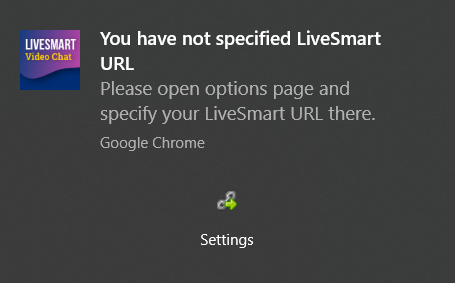
Using the example from above fill in here https://mydomain.com/video
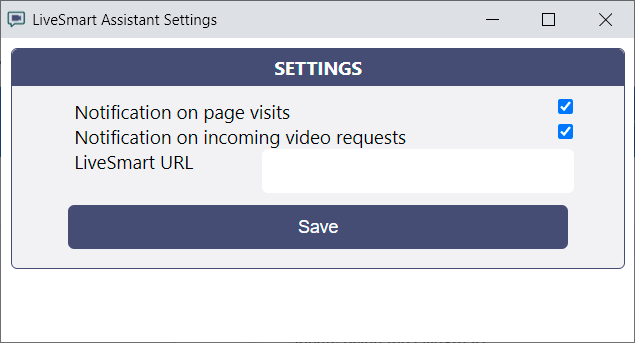
After the correct information is filled in, the agent can login with his credentials:
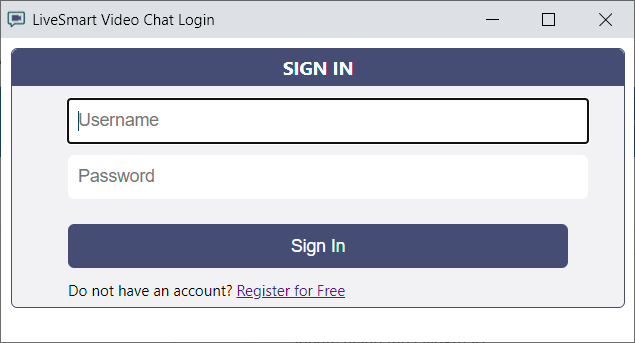
Following mark will appear in the Chrome bar. If it is not visible, it is available under extension mark and can be pinned it.

After the agent is logged in, the dashboard can be accessed by clicking on the Assistant icon in the Chrome bar:
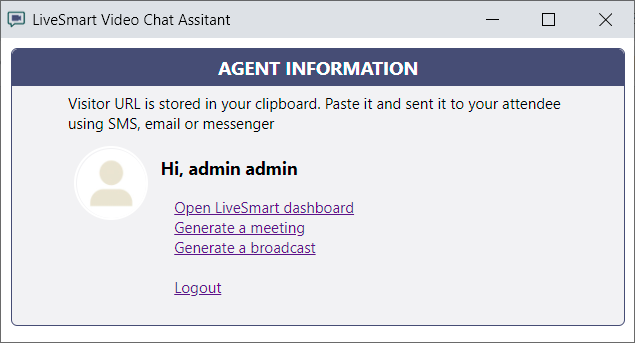
When a visitor requests a video session, the following notification will pop in. Agent can accept or decline the request:

LiveSmart Team
KeymasterLiveSmart features
Feature Demo and usage Live video Basic demo with screen sharing, snapshot, picture-in-picture and file transfer Whiteboard and recording Demo with included recording option and whiteboard Online scheduling Health-care solution. Schedule meetings on definite timeframe. Meeting is automatically stopped at the end and there is a timer showing the remaining time. Admission room Admission demo. In order attendee to enter the meeting, the organizer should admit him in. Online lessons Broadcasting demo. Ideal for online classes. There can be one presenter and up to 30-40 attendees. Private rooms Demo with private access. If you want to protect your room. Here is described how to do this. Social login Attendee login with Facebook or Google Speech recognition Speech recognition demo. Speak and the other party will receive text. Text to speech Text to speech demo. Type in your chat and your attendee will receive voice messages. This functionality can be combined with translation module. Speech to text & translation Translation demo. Speech to text and translation. It requires Google API key and is available for Chrome. Virtual background Virtual background demo demonstrates you how you can blur your background or choose a fancy wallpaper. Stream a video Demo. Make a video file and broadcast it. Chat engagement Chat engagement. Agents from the Dashboard can engage visitors of the site by starting a chat session with them. Demo with presence button Dashboard login with demo/demo and open in a new device or incognito tab the visitor button Integrations Integration with WoWonder, WonderTag theme, PlayTube Platform, DocTreat theme and LatePoint. For more info, visit this Integration guide. Video logs Gather all video related events – start/stop video, attendee join/leave, start/stop screenshare, start/stop recording. Available in the Dashboard Offline form If your agent is not available, the visitor can anyway send an email. For demo visit Contact options and if the Start Video Chat button is red, click on it. URL shortener Make user friendly URLs for your agents and visitors. Login to Dashboard with demo/demo, go to Room management and create a room with predefined short URLs Switch camera Switch between front and back camera of your mobile. Localization For more information about how to do the localization of LiveSmart, visit this guide. Chrome Assistant Chrome extension that is helping agents to contact their visitors and is removing the necessity of being logged in the Dashboard panel WordPress Plugin Install this plugin to add easily the presence button to your WP pages and posts; LiveSmart Team
KeymasterThis is a demo page, where you can see how LiveSmart Video Chat works with default settings.
1. Open the organizer link;
You will see the initial entry form. By providing a common name, you can enter the room as room owner.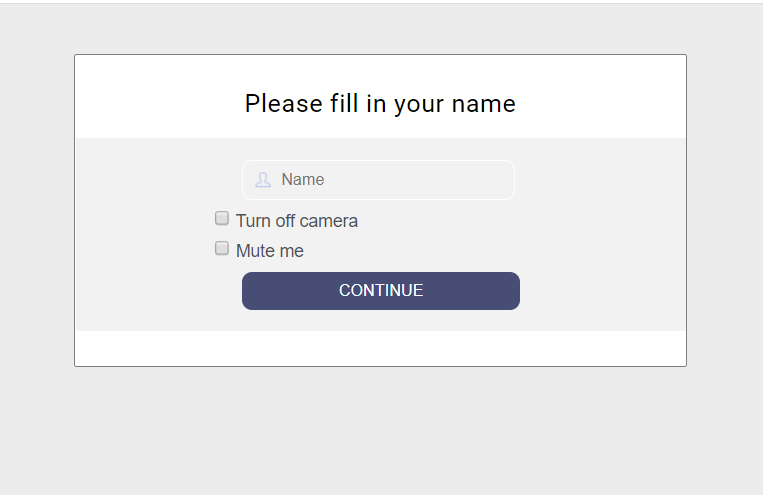
2. Click on the corresponding visitor link so it is copied in the clipboard then send it to a new device or open in incognito tab.
3. After the visitor enters the room, both attendees will be able to do a video call and the organizer to share his screen. Both parties can send files from the chat panel. To see how whiteboard and recording work, please visit the Recording Demo.

Check the video how to use this demo
WARNING! Please note that you have to allow your browser to access camera and/or microphone in order the video chat to work.

In order to reduce the echo if you are on the same machine, you can mute microphone or lower the volume. For optimal demo results it is good to use two different devices.
If you see “Waiting for the other party to join” label, make sure both links are opened.
If you need assistance or facing problems with the demo, please do check the contact options or visit our support forum.
LiveSmart can be legally purchased only from CodeCanyon. If you have obtained the software from another source, you face the risk of it not working properly, or to have inclusions that may harm your system.
LiveSmart Team
KeymasterThis is a demo page, where you can see how LiveSmart Video Chat with social login form works.
1. Open the organizer link;
You will see the initial entry form. By providing a common name, you can enter the room as room owner.
2. Click this attendee link to copy it in the clipboard and send it to a new device or open in incognito tab.

3. You can continue to video meeting after login with your Facebook or Google account. Recording feature is available for Chrome or Firefox browser. When the call is established, you can click on the Recording icon to start record the meeting. Once you stop the recording, a preview link is available.
WARNING! Please note that you have to allow your browser to access camera and/or microphone in order the video chat to work.

In order to reduce the echo if you are on the same machine, you can mute microphone or lower the volume. For optimal demo results it is good to use two different devices.
If you see “Waiting for the other party to join” label, make sure both links are opened.
If you need assistance or facing problems with the demo, please do check the contact options or visit our support forum.
LiveSmart can be legally purchased only from CodeCanyon. If you have obtained the software from another source, you face the risk of it not working properly, or to have inclusions that may harm your system.
LiveSmart Team
KeymasterIn this demo you will see how admission facility works. Also the meeting is scheduled to end in 4 minutes after the meeting starts.
If you need assistance or facing problems with the demo, please do check the contact options or visit our support forum.1. Open this organizer link;
You will see the initial entry form. By providing a common name, you can enter the room as room owner.
2. Click this attendee link to copy it in the clipboard and send it to a new device or open in incognito tab.
3. After the visitor enters the room, the agent will be prompted to admit the visitor in the room. Meeting duration is set to 4 minutes.
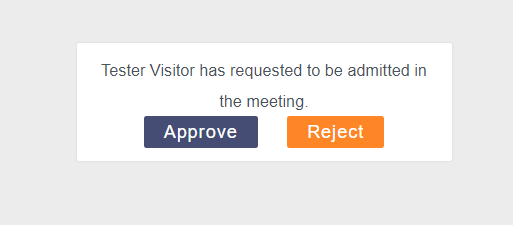
WARNING! Please note that you have to allow your browser to access camera and/or microphone in order the video chat to work.
In order to reduce the echo if you are on the same machine, you can mute microphone or lower the volume. For optimal demo results it is good to use two different devices.
If you see “Waiting for the other party to join” label, make sure both links are opened.
If you need assistance or facing problems with the demo, please do check the contact options or visit our support forum.
LiveSmart can be legally purchased only from CodeCanyon. If you have obtained the software from another source, you face the risk of it not working properly, or to have inclusions that may harm your system.
LiveSmart Team
KeymasterNew features in the latest (2.0.37) release
- WoWonder v.4.1.1 and PlayTube 2.2.1 integrations;
- Minor UI fixes;
Integrations are included in extension folder of the latest release.
Features in previous releases
- Virtual background, where you can blur your background or add your own. When the meeting starts click on the virtual icon and choose to blur your background or set a fancy image for a background.
- Active meetings. The organizers can track if there are any active meetings running and they also can join them.
- Text to speech module. Now your chat and translated messages can be received as voice to the other party. There are two new configuration options – transcribe.text_speech_chat and transcribe.text_speech_transcribe that enables text to speech in chat and translation modules;
- Feature requests: API secured with Authorization token, option for scheduled meetings to end for organizer too and password recovery module;
- New Chrome extension to assist your organizers. More information about this feature can be found here.
- Integration with WoWonder 3.2.2, PlayTube 2.1 and WonderTag 2.3.6 theme. Demo with admin1/admin1234 and demo1/demo1234 users is available here.
- Integration with DocTreat theme;
- Integration with LatePoint Plugin. You can read more about LiveSmart integrations here;
- Video Session logs gathering of all video related events – start video, end video, attendee joining and leaving, start and stop screenshare, start and stop recording. There is a new configuration option – serverSide.videoLogs and additional SQL file to be executed;
- Feature request – timer for remaining time for scheduled meetings, introduced a new configuration property – videoScreen.meetingTimer;
- Social media login. Enabled for Facebook and Google accounts.
- Admission facility. Now host can approve or reject an attendee in a meeting. This is a configuration option;
Installation Manual
LiveSmart can be legally purchased only from CodeCanyon. If you have obtained the software from another source, you face the risk of it not working properly, or to have inclusions that may harm your system.
Installation of LiveSmart is easy and straightforward as there is an installation page and script to help you with the process. There is a video tutorial on how to do this. You need some basic knowledge on how to connect to your server over terminal and root access, as you need to do some Node.js installations.
1. You need Node.js installed on your server, at least version 10.* and valid SSL certificates;
2. For flawless video sessions you also need to install your own TURN server as described in this Ubuntu tutorial or here: CentOS tutorial. Other option is to use free or commercial one.
For detailed step by step instructions and video manual, please enter your purchase code in the field or contact me at contact@livesmart.video:
STUN/TURN Servers
SmartVideo Video platform offers all customers an advanced video real-time communications solution through all audio/video/screen/data streams are transmitted. Generally, it has to be deployed over a public Internet so any user must connect and send media fragments over RTP (Real-time Transport Protocol) ports without specific network issues.
However, sometimes this is not enough. Some users try to connect through different IP networks where Firewalls and NATs (Network Address Translators) could include specific policies that do not allow any kind of RTC communications. ICE (Interactive Connectivity Establishment) protocol is used to find the best connection solution. It defines a systematic way of finding possible communication options between a peer and the Video Gateway (WebRTC).
What is a STUN Server?
Sometimes, you can use a protocol called STUN (Session Traversal Utilities for NAT) that allows clients to discover their public IP address and the type of NAT they are behind. This information is used to establish the media connection. In most cases, a STUN server is only used during the connection setup and once that session has been established, media will flow directly between the peer and the Video Gateway (WebRTC).
What is a TURN Server?
However, even if we setup properly a STUN server, there are very restrictive corporate networks (e.g: UDP traffic forbidden, only 443 TCP allowed…), which will require clients to use a TURN (Traversal Using Relays around NAT) server to relay traffic if direct (peer to Video Gateway) connection fails. In these cases, you can install our TURN server (in another instance) to solve these issues.
The TURN server is really easy to add for all your RTC developments, including it as another ICE server within the Video Gateway (WebRTC).
The following diagram depicts the signaling process:
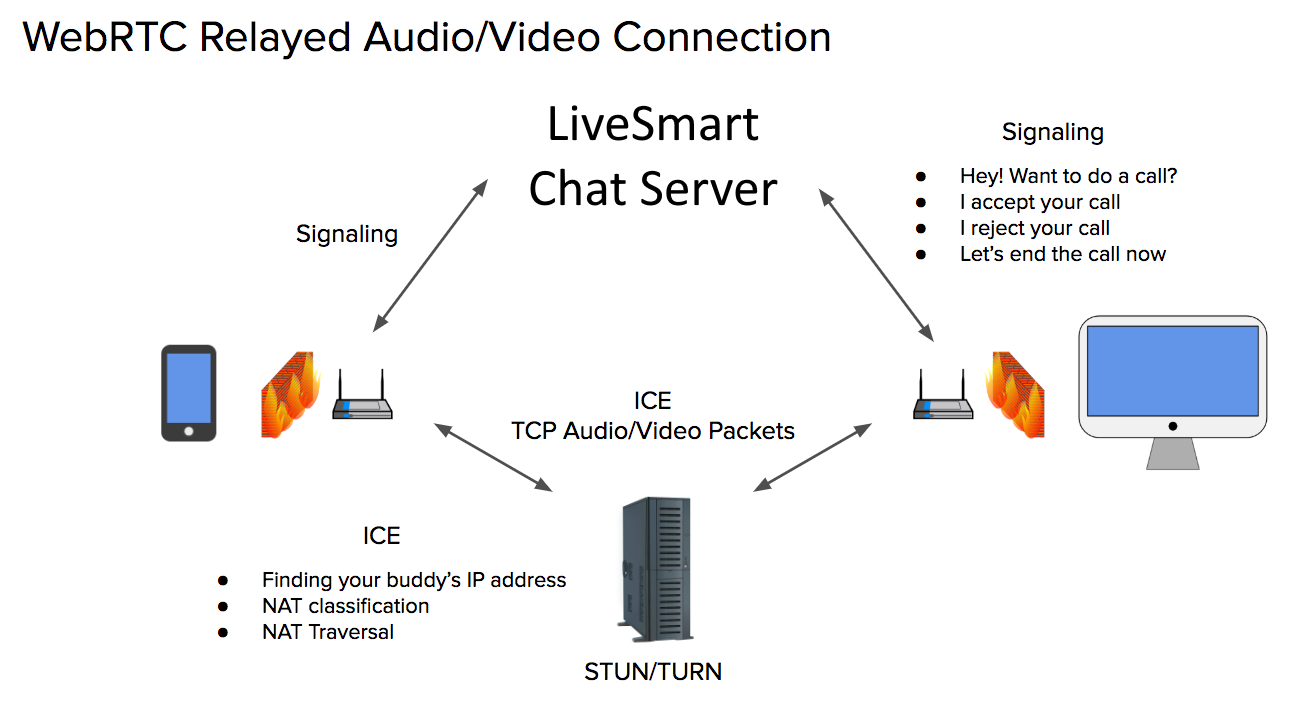
Server Side User Login
You may use server side scripts to enable login for your visitors. The /server folder contains two PHP files and a sample SQL dump for users table.
connect.phpcontains necessary information for DB connection and thescript.phpis performing the connection logic. The sample users table contains only two fields – username and MD5 encrypted password, but it can be enhanced to adapt for your own system.Front End Installation and Guide
The front-end file structure is as follows:
– agent.html and agent.php – sample pages showing actual visitors. It can be set behind user/pass and shows the visitors of your site;
– client.html and client.php – sample pages containing the status button, from where your visitors can start video/chat communications with you;
– pages – HTML pages;
– pages/r.html – this is the actual video/chat panel, where the video objects resides;
– config/config.json – configuration JS file;
– js/bundle.js – bundled JavaScript code, responsible for loading the core JS files.
– js/bundle-client.js – bundled JavaScript that is included in the video popup window.
– css/ – CSS files. button_*.css – all the button styles.
– extensions/ – integrations with WoWonder, Wondertag, Doctreat, PlayTube and Latepoint platforms. Google Chrome extension to assist LiveSmart organizers.
– locales/ – internationalization JSON file.
– media/ – ringtones.
– server/ – server side PHP scripts and SQL dump file. Used for server side user login and saving the recorded video file.
– ws/ – composer and package JSON files for signaling server.
– ws/ssl/ – sample self-signed certificates.
– admin/ – admin panel to be integrated in bigger platforms.
– dash/ – dashboard standalone admin panel for managing rooms/users/organizers/recordings/configuration settings and locales.Status Button
Add the following code snippet to your site, so you are able to track and communicate with your visitors:
<div id="nd-widget-container" class="nd-widget-container"></div>
<script id="newdev-embed-script" data-message="Start Video Chat" data-source_path="YOUR_DOMAIN" src="YOUR_DOMAIN/js/widget.js" async></script>
The script accepts some data attributes, so you can personalize it:
Data attribute Description data-source_path (*) The website your button resides. It should be HTTPS data-button-css Optional. The CSS of the button itself. The default style is located at /css/button.css. There are six prefefined styles that are listed below data-message Optional. The label on the button. Default is “Start Video Chat” data-avatar Optional. Image of the organizer. It can be PNG, JPG, CSV. This can be also defined in the config.json file. data-names Optional. Names of the organizer. This option can be also defined in the config.json file data-room_id Optional. If you need the button to open only specific room. data-agent_id Optional. Defining specific organizer scope that only organizer with the same ID in the organizer dashboard will be notified of client presence. data-config Optional. Define a config file for the meeting. It needs to be present in /config folder of LiveSmart. Otherwise it will fallback to the default configurations; data-iframe_id Optional. ID of target iframe. If you want the video window to open in an iframe and not in popup. Make sure the “allow” attribute with values “camera, microphone” is included; data-intab Optional. If this is set to true, the video window will open in a new tab, not in popup window. data-offline_email Optional. Contact email when you are not available and the button is offline. By clicking on the button a contact form will open and the visitor can add his inquiry there. data-offline_page Optional. URL of the contact page. If set, when the visitor clicks on the offline button, he will be redirected to the specified contact page. data-visitor_name Optional. Visitor name can be set with this parameter. Used when the button is for a specific predefined user. data-datetime Optional. Datetime added in the format YYYY-MM-DDThh:mm:00.000Z in UTC. data-duration Optional. Duration of the meeting in minutes. data-disablevideo Optional. Option to disable video for the meeting. data-disableaudio Optional. Option to disable audio for the meeting. data-disablewhiteboard Optional. Option to disable whiteboard for the meeting. data-disablescreenshare Optional. Option to disable screenshare for the meeting. data-transfer Optional. Option to disable file transfer for the meeting. * Mandatory data attribute Config file properties:
– terms – string, this is URL for the Terms&Conditions. If filled, the checkbox will appear in the entry form and will be mandatory;
– text_speech_chat – true/false. Enables text to speech in chat, default is false;
– text_speech_transcribe – true/false. Enables text to speech in translation module, default is false;Property Description agentName Optional. Name of the agent/owner. This can be set also in the code snippet of the button. agentAvatar Optional. Avatar, image of the agent/owner. This can be set also in the code snippet of the button. chromePluginId (*) Id of the Chrome screen sharing plugin. Do not change unless you have own plugin installed. smartVideoLanguage (*) Language of the application. If you need it translated, you have to set locale file with the same structure in the /locales folder. If you set smartVideoLanguage: es_ESyou must have es_ES.json file with the same structure as en_US.json .anonVisitor (*) How the anonymous visitor will be seen on your end. If you set Visitorin the chat pane, or in the video preview, you will see the attendee name as Visitor-[some number].entryForm Optional. It has additional sub parameters:
– enabled – true/false, default is false;
– required – true/false, the form is mandatory. Default is false;
– private – true/false, set the form to have password field. If the admin has set a pass for this room, the pass field is mandatory. Default is false;
– showEmail – true/false, show or not email field. Default is false;
– showAvatar – true/false, show or not field for inputing avatar URL. Default is false;videoScreen (*) Defining the video screen UI
– chat – true/false, show or not chat pane in the right of video session, whiteboard or broadcast. Default is false;
– greenRoom – true/false, enables pre-call form, where user can choose available audio and video devices. Default is false;
– waitingRoom – true/false, system messages are shown in the video panel, not in the chat. Default is false;
– onlyAgentButtons – true/false, only organizer side has action buttons activated. Not visible for visitors. Default is false;
– enableLogs – true/false, if set to true, this will enable logging in the browser console. It is recommended to be false and enabled only for tracking problems. Default is false;
– videoConstraint – JSON ({“width”: {“min”: 640, “ideal”: 640, “max”: 640}, “height”: {“min”: 400, “ideal”: 400, “max”: 400}, “frameRate”: { “max”: 30 }, “aspectRatio”: {“ideal”: 1.7777777778}}), set video quality. Optional, may not present;
– audioConstraint – JSON ({“sampleSize”: 16, “channelCount”: 2}), set audio quality. Optional, may not present;
– screenConstraint – JSON ({“maxWidth”: 1920, “maxHeight”: 1080}), set screenshare max width/height quality. Optional, may not present;
– videoContainerStyle – this is a required attribute and is defining the UI of the LiveSmart pane. The default value is ‘conference’ and is representing a Zoom like UI. If you set ‘simple’, LiveSmart will use the old look and feel;
– separateScreenShare – true/false. When starting a screen share, its stream is replacing video. By setting this setting to true, the screen sharing will be in a separate stream and will not affect showing the video. Default is false;
– broadcastAttendeeVideo – true/false. When an attendee in the broadcasting session raises a hand, the organizer can grant him permission to speak. He can join with audio if this setting is false and with audio and video if true. Default is false;
– allowOtherSee – true/false. When an attendee in the broadcasting session is granted privilege to broadcast and if this option is enabled, the attendee will be seen/heard by everybody. Default is false;
– localFeedMirrored – true/false. If is true, the local video screen is showing as mirrored. Default is false;
– exitMeeting – String/false. This property is defining the behavior on exit meeting. It can be an URL or JavaScript. Example: https://google.com will redirect to Google on exit. javascript:alert(‘Your meeting has ended’) will popup an alert with sign “Your meeting has ended”. Default is false;
– exitMeetingOnTime – true/false. If set to true, when there is a duration set of the meeting, it will pop a notification one minute before the meeting ends and when the meeting finished it will automatically ends it. Default is false;
– meetingTimer – true/false. Applies only to scheduled meetings. If set to true, the timer will appear two minutes before the meeting ends. Default is false;
– admit – true/false. Enables admission facility. If set to true, visitor is required to be approved by the host to enter the meeting. Default is false;
– pipEnabled – true/false. Enables picture in picture feature. Supported by Chrome for desktop, both desktop and iOS Safari and Edge. It is enabled by default for Firefox. Default is false;
– videoFileStream – String. Set here a path to video file (supported formats are mp4, webm, mov, ogg);
– primaryCamera – ‘user’/’environment’. Defines the default starting camera for mobiles. ‘User’ is the front camera, ‘environment’ is the back one. Default or if missing is ‘user’;
– dateFormat – possibility to add different time formats for Scheduled meetings. ISO, short, medium and long date formats are supported;
– videoConference – true/false, when the videoContainerStyle is set to ‘conference’ and this attribute is true, the video screen of the talking attendee will become big. Default is true;
Constraints values can be seen described in this article.serverSide Optional. Enabling server side login check with PHP and MySQL scripting. For now has only one sub parameter:
– loginForm – true/false, enables server side user login. Check PHP scripts and SQL dump file in /server folder. Default is false;
– chatHistory – true/false, enables saving of chat history. Check PHP connect and script PHP files and SQL dump in /server folder. Default is false;
– agentInfo – true/false, gets organizer info from the DB, ignoring all the other information – the URL or the button. Default is false;
– token – true/false, organizer and user login type. Tokens are defined for each attendee per room. Default is false;
– feedback – true/false, enables feedback facility. Rate and feedback form triggers for visitors once the call is ended. Default is false;
– checkRoom – true/false, If set to true, video is allowed only for enabled rooms from the Database, listed in Room list. Default is false;
– videoLogs – true/false, If set to true, the system will start to gather all video related events – start video, end video, attendee joining and leaving, start and stop screenshare, start and stop recording. Default is false;whiteboard Configuration settings for whiteboard feature:
– enabled – true/false. Default is false;
– allowAnonymous – true/false. If true, all the attendees in the conference can draw. Default is false;transcribe Configuration settings for voice to text feature:
– enabled – true/false. Default is false;
– language. The language to which voice will be transcribed into text. Available languages are listed here. Default is “en”;
– languageTo. If set, this will be the language to which will be translated the specified inlanguage;
– apiKey. Google API key necessary for the translation to work. In this tutorial is described how to get it.;
– direction. This parameter can have three values –both,agentorvisitor. When usedboth, the translation goes in the two directions – from organizer to visitor and vice versa. When set toagent, the organizer speech will be translated fromtranscribe.languagetotranscribe.languageToin the visitor screen. Ifdirectionisvisitor, then the visitor speech will be translated fromtranscribe.languageTototranscribe.languagein the organizer screen;recording Optional. It has additional sub parameters:
– enabled – true/false, default is false;
– download – true/false, if set to true, right after the recording or meeting ends, the record file will be downloaded. Otherwise a link for preview will be shown. Default is false;
– saveServer – true/false, if set to true, the recorded file will be send to backend for saving. Check/server/saverecord.php. Default is false;
– autoStart – true/false, if set to true, the recorded will start automatically the moment call is established. Default is false;
– screen – true/false, if set to true, enables recording of everything. Records are in chunk of one minute long. Default is false;
– oneWay – true/false, if set to true, enables recording only for visitors. Organizer is not recorded. Default is false;
– transcode – true/false, if set to true, enables FFmpeg transcoding of the recorded file. It is mandatory FFmpeg to be installed on your system (Ubuntu, CentOS, Debian and Windows) and recroding.saveServer to be true. Default is false;
– filename – “record_%room%_%datetime%”, defining the file name pattern. %room% and %datetime% are placeholders and will automatically be changed with the room name and the current date/time.
– recordingConstraints – defining the desired recording video size. Default values are {“width”: 360, “height”: 240}.appWss (*) URL of the signaling server. It should be SSL enabled – WSS. maxParticipantsAllowed Optional setting, limiting participants in a meeting. blackList Optional setting, list with rooms, that are banned. Format is [roomId1, roomId2, …] alwaysNotify Optional setting, if set to true, notification will be always set, not only when the screen is not on focus. Default is false. maxParticipantsAllowed Optional setting, if set, will define number of allowed visitors in a meeting. social – enabled – true/false, default is false. Enables social media login. entryForm.enabled also should be true, and Facebook and/or Google API IDs be provided;
– facebookId. Facebook application ID, necessary for Facebook login. Check this tutorial on how to get ID;
– googleId. Google API ID. Check the tutorial on how to get Google client ID.iceServers (*) – requirePass – true/false, default is false. For more info on how to encrypt username/password, check in the installation manual;
– STUN/TURN servers. Defaults are to Google STUN. If you have enabled own STUN/TURN server, you need to set it here.* Mandatory fields Predefined button styling
CSS File Button button_green.css 
button_blue.css 
button_gray.css 
button_lightgray.css 
button_lightred.css 
button_orange.css 
Video and Chat Page
After the organizer is in the room, it is now opened for video and chat:
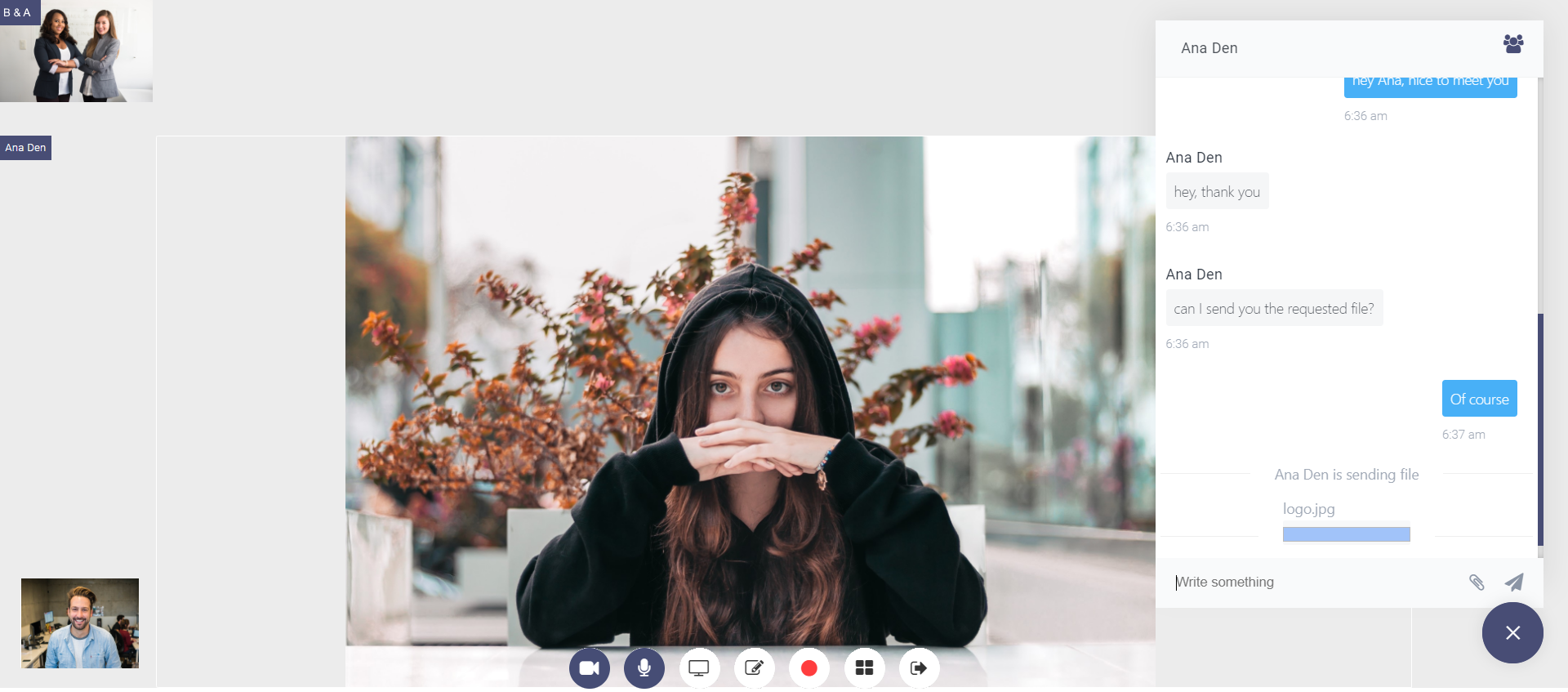
From here users can toggle video and audio, do screenshare and whiteboard, make a snapshot, or start a recording session.Remember to give permission for the browser to user your camera and/or microphone.
The available buttons here are:
– Toggle video – start/stop video camera;
– Toggle audio;
– Share screen – available only for Chrome, Firefox and Edge;
– Switch camera – if on mobile with back and front cameras, or on computer with more than one camera installed;
– Share screen – available only for Chrome, Firefox and Edge;
– Whiteboard – available only for Chrome, Firefox and Edge;
– Snapshot – take a screen capture of the video.
– Recording – Start/stop a recording of a meeting. Available only for Chrome and Firefox;
– Exit – user can exit from the current meeting.

Internationalization
LiveSmart Video Chat supports internationalization. The locale strings are in locale JSON file in /locales folder. If you need to translate to Spanish, you have to add es_ES.json file to /locales folder with the same structure as en_US.json file and set language in the /config/config.json
smartVideoLanguage: es_ESThe key->value pairs should be as follows
{
...
"Cancel" : "Sesion finalizada.",
"waitingToConnect" : "Conectándose",
"callWithVideo" : "Llama a través del servicio de video llamada.",
"callWithAudio" : "Comunícate a través del servicio de llamada.",
...
}
You can skip these manual steps, by using the locale section in the Dashboard panel.Screen Sharing
Screen sharing is available for Chrome 72+, Firefox 52+ and MS Edge 17+ browsers without additional installations. If you use an older Chrome browser, we have a multi domain ScreenShare plugin specially done for LiveSmart Video Chat.
Also the/extension/chromefolder contains JS code for enabling screen sharing on Chrome browser. Screen sharing on Firefox and Edge is pluginless.In order to enable screen sharing plugin for older Chrome browsers you have the following options:
– download the plugin from Google Webstore or if it is not installed and you click on the Share button, you will be redirected to it.
– change the chromePluginId in/config/config.jsonand icon.png in/extension/chrome. Then zip the files and publish the extension to Google Developer Dashboard;
– publish the extension locally. Open chrome://extensions in your Chrome, check Developer mode in the upper right corner, click on Load unpacked and point to where is you chrome extension folder.Private Access
If you need to make access to your rooms private behind a password, you can do it two ways:
– from the admin or dash panels. SetentryForm.enabledto true, and generate the room with a password from the organizer page;
– Make this server side. SetentryForm.enabled,entryForm.showEmail,entryForm.privateandserverSide.loginFormto true, check if PHP connection script is properly set and execute SQL dump files in/serverfolder. The PHP file connect.php is used to make the connection to the DB and script.php is doing the actual job. We assume that the table islsv_usersas is in the SQL dump file, but you can use your own backend facility. Make sure you have added users in the table from the admin panels;Admin panel
The admin panel has a backend information about the organizers, users, rooms, chat history and recordings.
You need PHP >5.6 and MySQL on your server.Check here with demo/demo. The client page for the demo organizer is here.
Short URLs are a convenient way to represent your rooms and that can be easily shared and send. You need mod_rewrite enabled. If you have already .htaccess in the folder where LiveSmart is, check demo.htaccess and add the new lines to your .htaccess, otherwise use demo.htaccess and rename it to .htaccess
LiveSmart Team
KeymasterThis is a demo page, where you can see how LiveSmart Video Chat allows one or more broadcasters to stream pre-recorded video to their attendees. Video file is loaded from the server or from any location, that is specified in the configuration.
Normal broadcasting demo, where you can stream from your camera is located here.
1. Open the broadcaster link.
You will see the prerecroded video being played in your bottom left video pane.
2. Click on the viewer link to copy it in the clipboard and send it to a new device or open in incognito tab.
and receive live streaming of pre-recorded video.WARNING! Please note that you have to allow your browser to access camera and/or microphone in order the video chat to work.

In order to reduce the echo if you are on the same machine, you can mute microphone or lower the volume. For optimal demo results it is good to use two different devices.
If you see “Waiting for the other party to join” label, make sure both links are opened.
If you need assistance or facing problems with the demo, please do check the contact options or visit our support forum.
LiveSmart can be legally purchased only from CodeCanyon. If you have obtained the software from another source, you face the risk of it not working properly, or to have inclusions that may harm your system.
LiveSmart Team
KeymasterThis is a demo page, where you can see how the proactive chat engagement from agent dashboard works. Agent can start a chat from agent dashboard with a visitor to the site.
1. Open this agent link. You will see the agent dashboard, where you can pro-actively engage the current visitor.
Click on the link and start chat: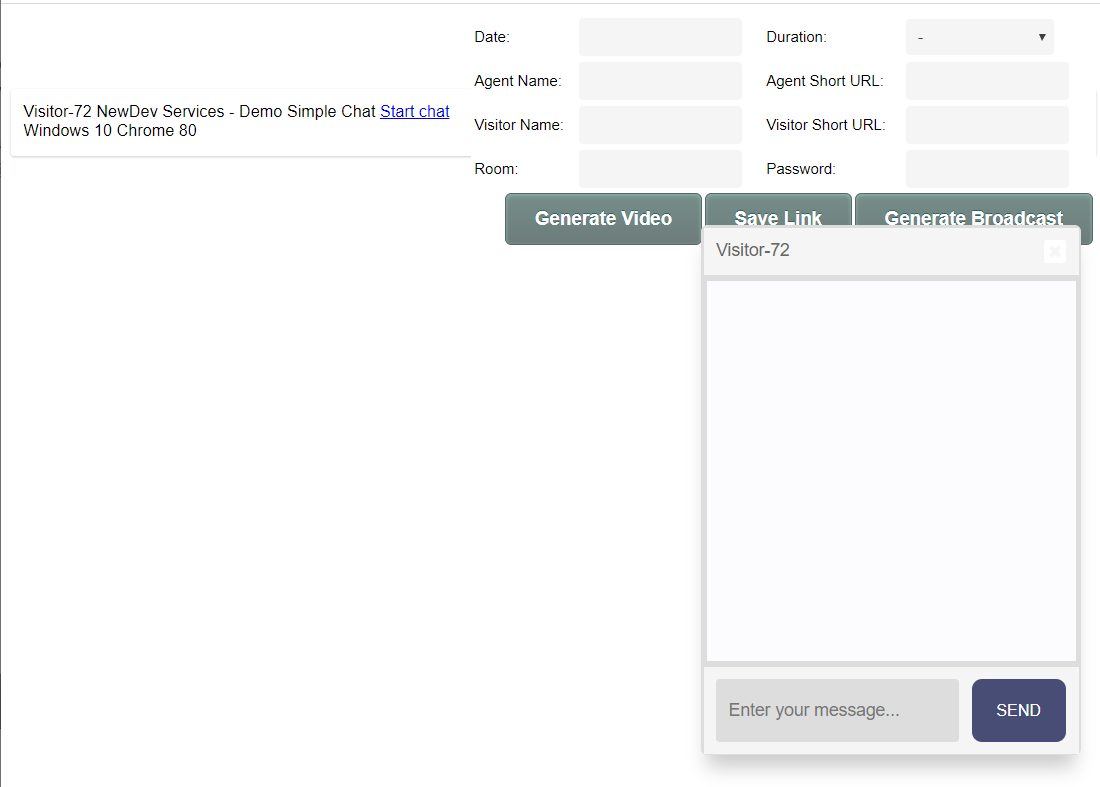
2. In this page you can respond, minimize or close the chat. Once closed, the agent cannot engage the visitor any more.
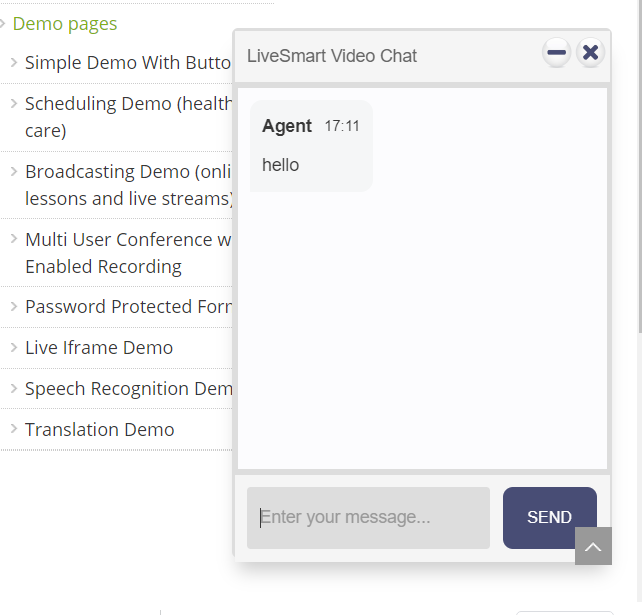
If you need assistance or facing problems with the demo, please do check the contact options or visit our support forum.
LiveSmart can be legally purchased only from CodeCanyon. If you have obtained the software from another source, you face the risk of it not working properly, or to have inclusions that may harm your system.
LiveSmart Team
KeymasterThis is a demo page, where you can see how LiveSmart Video Chat voice to text and translation module works. This functionality works only with desktop and mobile Chrome browsers.
In order the demo to work, and there is no echo and overload, you should do this on different devices and not close one to another.
1. Choose the agent language from the list
and open the agent link
You will see the initial entry form. By providing a common name, you can enter the room as room owner.
2. Choose the attendee language from the list
Click this attendee link to copy it in the clipboard and send it to a new device so there is no echo. The attendee should see subtitles in his language while the agent is speaking. His voice on the other hand will be translated to the agent language.WARNING! Please note that you have to allow your browser to access camera and/or microphone in order the video chat to work.

In order to reduce the echo if you are on the same machine, you can mute microphone or lower the volume. For optimal demo results it is good to use two different devices.
If you see “Waiting for the other party to join” label, make sure both links are opened.
If you need assistance or facing problems with the demo, please do check the contact options or visit our support forum.
LiveSmart can be legally purchased only from CodeCanyon. If you have obtained the software from another source, you face the risk of it not working properly, or to have inclusions that may harm your system.
LiveSmart Team
KeymasterThis is a demo page, where you can see how LiveSmart Video Chat voice to text module works. This functionality works only with desktop and mobile Chrome browsers.
1. Open this agent link
You will see the initial entry form. By providing a common name, you can enter the room as room owner.
2. Click this attendee link to copy it in the clipboard and send it to a new device.When you start speaking, you should see the voice from the agent being transcribed as subtitles.
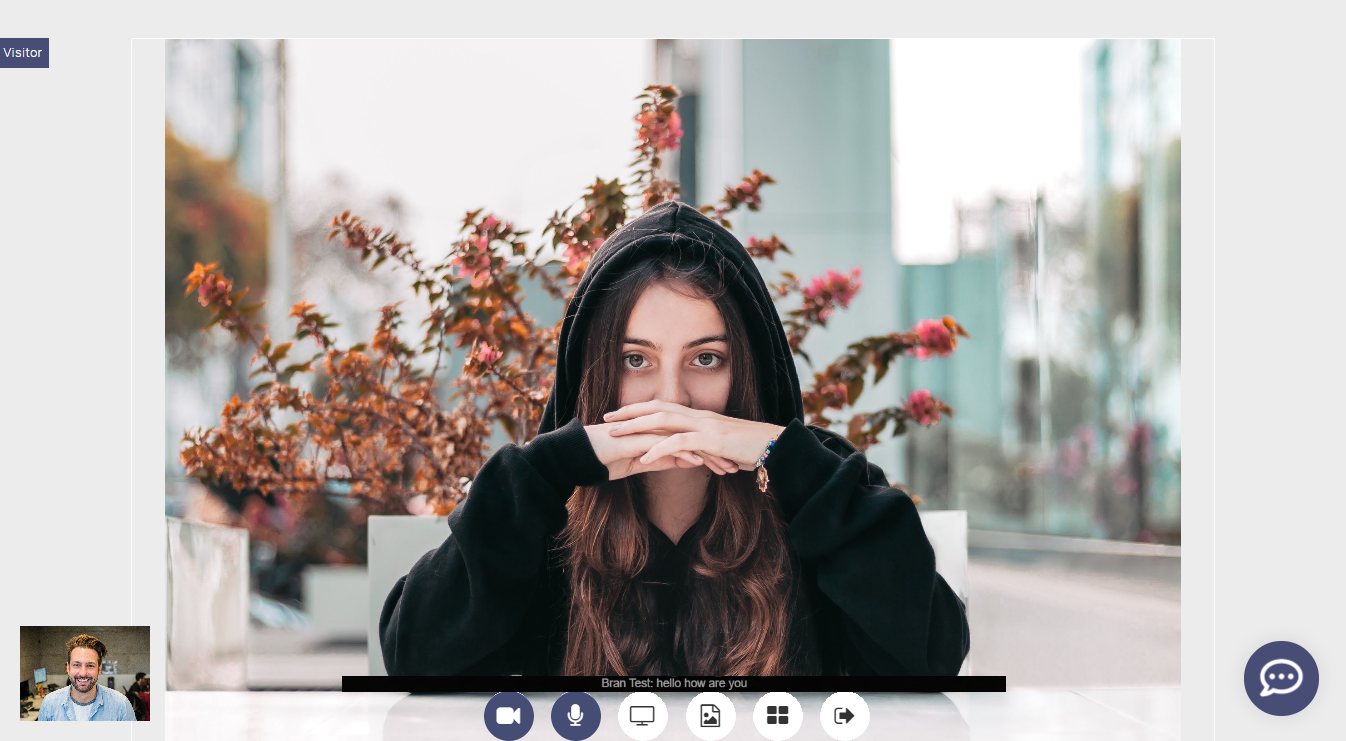
Check the video how to use this demo
WARNING! Please note that you have to allow your browser to access camera and/or microphone in order the video chat to work.

In order to reduce the echo if you are on the same machine, you can mute microphone or lower the volume. For optimal demo results it is good to use two different devices.
If you see “Waiting for the other party to join” label, make sure both links are opened.
If you need assistance or facing problems with the demo, please do check the contact options or visit our support forum.
LiveSmart can be legally purchased only from CodeCanyon. If you have obtained the software from another source, you face the risk of it not working properly, or to have inclusions that may harm your system.
LiveSmart Team
KeymasterThis is a demo page, where you can see how the button and the corresponding agent link works.
Copy the agent link, open in another browser or mobile device, and after that as you see the button becomes green and you can click on it.
You will see the initial entry form. By providing a common name, you can enter the room as room owner.
When the button becomes green and when you click on it, you will see how client window is opened in the an iframe just below:
WARNING! Please note that you have to allow your browser to access camera and/or microphone in order the video chat to work.

In order to reduce the echo if you are on the same machine, you can mute microphone or lower the volume. For optimal demo results it is good to use two different devices.
If you see “Waiting for the other party to join” label, make sure both links are opened.
If you need assistance or facing problems with the demo, please do check the contact options or visit our support forum.
LiveSmart can be legally purchased only from CodeCanyon. If you have obtained the software from another source, you face the risk of it not working properly, or to have inclusions that may harm your system.
LiveSmart Team
KeymasterThis is a demo page, where you can see how LiveSmart Video Chat with enabled recording and chat with password protected form works.
1. Open the organizer link;
You will see the initial entry form. By providing a common name, you can enter the room as room owner.
2. Click this attendee link to copy it in the clipboard and send it to a new device or open in incognito tab.
The password is set to 123;
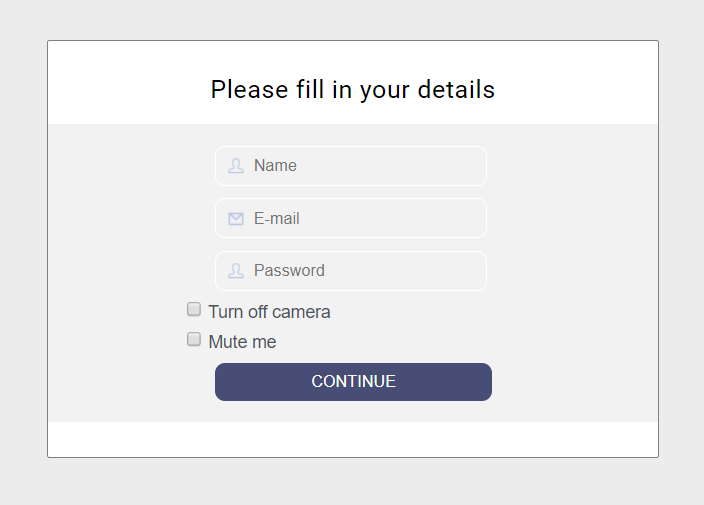
3. Recording feature is available for Chrome or Firefox browser. When the call is established, you can click on the Recording icon to start record the meeting. Once you stop the recording, a preview link is available.
WARNING! Please note that you have to allow your browser to access camera and/or microphone in order the video chat to work.

In order to reduce the echo if you are on the same machine, you can mute microphone or lower the volume. For optimal demo results it is good to use two different devices.
If you see “Waiting for the other party to join” label, make sure both links are opened.
If you need assistance or facing problems with the demo, please do check the contact options or visit our support forum.
LiveSmart can be legally purchased only from CodeCanyon. If you have obtained the software from another source, you face the risk of it not working properly, or to have inclusions that may harm your system.
LiveSmart Team
KeymasterThis is a demo page, where you can see how LiveSmart Video Chat with enabled recording and chat with identification form works.
1. Open the agent link;
You will see the initial entry form. By providing a common name, you can enter the room as room owner.
2. Click this attendee link to copy it in the clipboard and send it to attendees you with to participate in the conference or open in incognito tab.
When all the participants are in the room, it will look like this
3. You may start the call by clicking on video or audio button from any of the sides.
Recording feature is available for Chrome or Firefox browser and from the admin side. When the call is established, you can click on the Recording icon to start record the meeting. Once you stop the recording, a preview link is available.
The visitor has a notification that the meeting is being recorded:

There are options for recording to autostart when the call is established and recorded files to be stored on the server.
WARNING! Please note that you have to allow your browser to access camera and/or microphone in order the video chat to work.

In order to reduce the echo if you are on the same machine, you can mute microphone or lower the volume. For optimal demo results it is good to use two different devices.
If you see “Waiting for the other party to join” label, make sure both links are opened.
If you need assistance or facing problems with the demo, please do check the contact options or visit our support forum.
LiveSmart can be legally purchased only from CodeCanyon. If you have obtained the software from another source, you face the risk of it not working properly, or to have inclusions that may harm your system.
LiveSmart Team
KeymasterOpen your cPanel, find where SSL section is
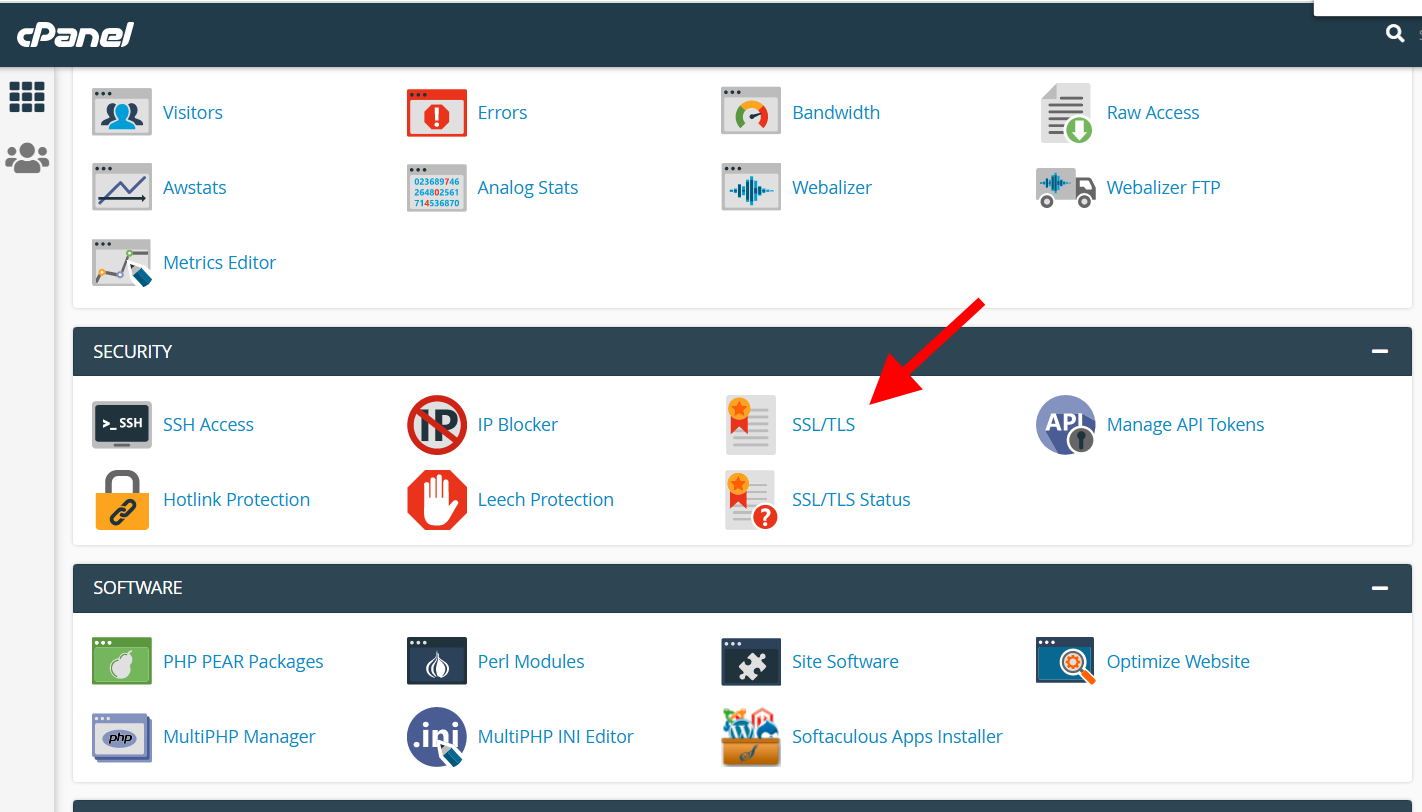
Click on Certificates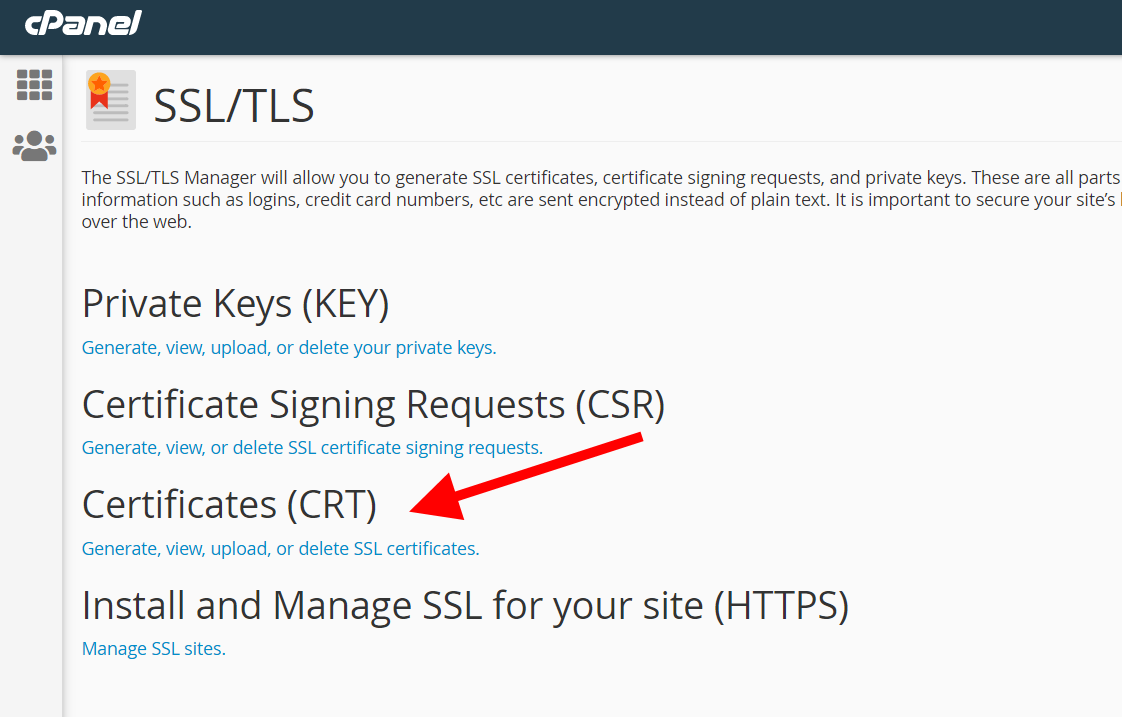
Find your server and it valid certificates and click on Edit
Scroll to bottom, right click on the link and copy it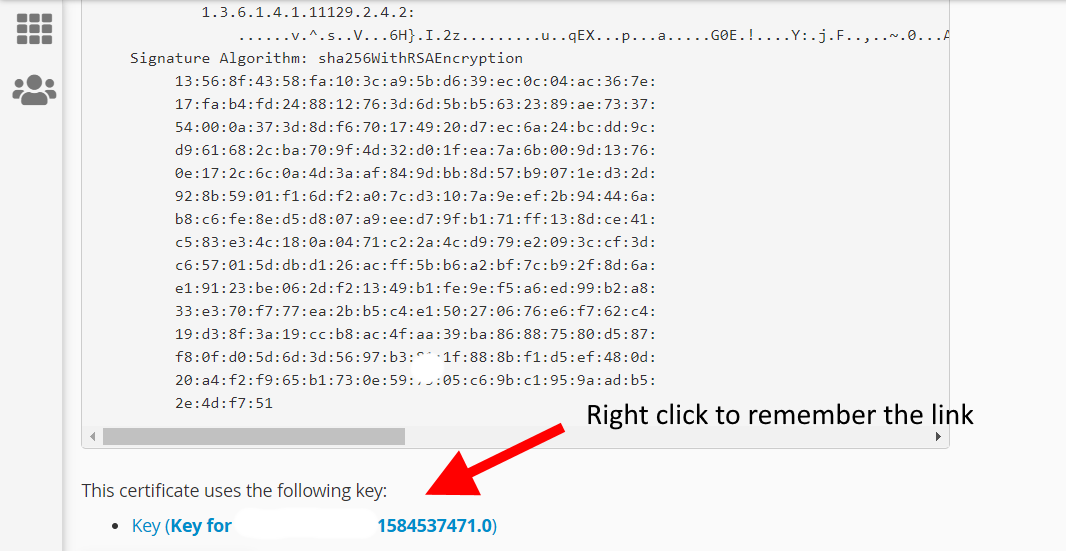
The link is something of the type:https://…../…./frontend/paper_lantern/ssl/viewkey.html?id=c99d7_26a03_39730483e85009664387718bccb5fb96
c99d7_26a03_39730483e85009664387718bccb5fb96is the key and it location is:/home/YOURACCOUNT/ssl/keys/c99d7_26a03_39730483e85009664387718bccb5fb96.keyand the certificate file is:
/home/YOURACCOUNT/ssl/certs/someting_c99d7_26a03_something.crtLiveSmart Team
KeymasterSmartVideo Video platform offers all customers an advanced video real-time communications solution through all audio/video/screen/data streams are transmitted. Generally, it has to be deployed over a public Internet so any user must connect and send media fragments over RTP (Real-time Transport Protocol) ports without specific network issues.
However, sometimes this is not enough. Some users try to connect through different IP networks where Firewalls and NATs (Network Address Translators) could include specific policies that do not allow any kind of RTC communications. ICE (Interactive Connectivity Establishment) protocol is used to find the best connection solution. It defines a systematic way of finding possible communication options between a peer and the Video Gateway (WebRTC).
What is a STUN Server?
Sometimes, you can use a protocol called STUN (Session Traversal Utilities for NAT) that allows clients to discover their public IP address and the type of NAT they are behind. This information is used to establish the media connection. In most cases, a STUN server is only used during the connection setup and once that session has been established, media will flow directly between the peer and the Video Gateway (WebRTC).
What is a TURN Server?
However, even if we setup properly a STUN server, there are very restrictive corporate networks (e.g: UDP traffic forbidden, only 443 TCP allowed…), which will require clients to use a TURN (Traversal Using Relays around NAT) server to relay traffic if direct (peer to Video Gateway) connection fails. In these cases, you can install our TURN server (in another instance) to solve these issues.
The TURN server is really easy to add for all your RTC developments, including it as another ICE server within the Video Gateway (WebRTC).
The following diagram depicts the signaling process:

-
AuthorPosts

